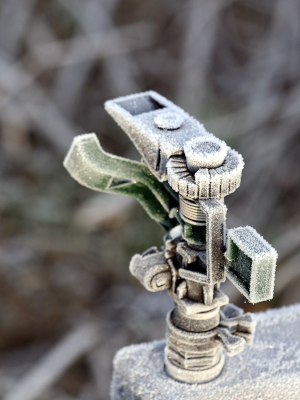 Most liquids contract when they freeze, but water is an exception. When you place water in an ice cube tray and freeze it, the ice rises above the level where the water was at the beginning. This has some important implications for the design and maintenance of any system designed to store or transport water, such as your plumbing or irrigation system. If water were to freeze inside your sprinkler irrigation lines, the tubing could crack. Fortunately, we at Laurdane Associates offer sprinkler winterization services to prevent this from happening. In this article, we will go over some key information you need to know about the winterization process.
Most liquids contract when they freeze, but water is an exception. When you place water in an ice cube tray and freeze it, the ice rises above the level where the water was at the beginning. This has some important implications for the design and maintenance of any system designed to store or transport water, such as your plumbing or irrigation system. If water were to freeze inside your sprinkler irrigation lines, the tubing could crack. Fortunately, we at Laurdane Associates offer sprinkler winterization services to prevent this from happening. In this article, we will go over some key information you need to know about the winterization process.
- Deactivation – The first step in our sprinkler winterization process is to deactivate the system’s irrigation controller. This prevents the sprinkler system from turning on during the winter, even by accident.
- Water Shutoff – After we have turned off the electrical components of your sprinkler system, we will shut off the water line that provides water to the sprinklers. This will ensure no water can enter your irrigation lines or sprinkler heads until the water is turned back on in the spring.
- Pipe Insulation – The third step in sprinkler winterization is to insulate any exposed pipes. Any above-ground pipes need to be wrapped in insulation to help keep them above freezing temperatures, which in turn helps prevent them from bursting.
- Water Drainage – Lastly, we will allow any water currently in your irrigation lines to drain out. This ensures there is no water to freeze inside your irrigation system during the winter.


